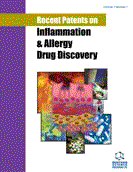Abstract
An alteration of contrast sensitivity (CS) might be connected with structural and functional changes in foveolar and perifoveolar regions caused by different etiologies. We tested the hypothesis, that disturbances of CS can precede the typical changes in macular area in nonproliferative diabetic retinopathy (NPDR) in young patients with diabetes type 1 (T1DM). Material and methods: One hundred and twenty one (121) patients (63 girls and young women and 58 boys and young men) were included in the study; their age ranged 7 to 36 years, (median: 17.6 years). The T1DM duration was 6 to 21 years (median: 9.8 years), and it was diagnosed at the age from 2 to 30 years (median: 10.5 years). CS was examined in all patients repeatedly after one year (range, 11 - 15 months, median: 12.5 months) by means of CSV-1000 instrument in 3, 6, 12, and 18 cycles/degree (c/deg) respectively. In 42 patients older than 18 years of age, the simultaneous CS and fluorescein angiography (FA) were performed; in all of them, the T1DM duration was longer than 10 years. The compensation of the metabolic state was evaluated from average yearlong values of the glycolysated hemoglobin (Hb1Ac). Results: The value of pathologically decreased CS in most of the cases was found in four spatial frequencies and the difference increased depending on the T1DM duration and was from 5 % to 8 % between 6 and 10 years of diabetes duration and from 17 % to 25 % after 15 years of diabetes duration. The total decrease of CS, especially in middle and higher frequencies (6, 12, and 18 c/deg), was determined by the increase of changes at the posterior pole. The early changes at the fundus related to the alteration of CS were of two types: (1) the dilatation of the capillaries with their possible obliteration and tortuosity (DCT) and (2) the changes of the macular structure (CMS) by means of the irregularity of the foveolar reflex and relative retinal thickening without significant macular edema and with increased pigmentation of this region. The combination of these two findings was considered as diabetic preretinopathy (DpR) with preserved visual acuity and decrease of CS in 65 % of cases. The authors also compared the decrease in every single space frequency marked on the CS curvature for NPDR and DpR (distinguished by means of FA). Comparing the NPDR with the norm, the authors found important and fundamental pathological defect of the CS (p = 0.0058). Comparing the DpR with the norm showed significant defect of the CS (p = 0.0197). Comparing NPDR and DpR, the difference was found in more noticeable pathological defect of the CS (p = 0.0228). The T1DM metabolic status during study (actual blood sugar and one year level of Hb1Ac) did not affected the CS positively nor negatively. The regressive study concerning the average Hb1Ac level (norm: 6.5 - 7.5 % by DCCT) during the 10 years period found, that in NPDR patients the Hb1Ac level was pathologically increased during three quarters (7.5 years) of the follow up period and in DpR patients during one half of the same period (5 years). Conclusions: The CS test by means of the CSV - 1000 device can already detect the first retinal changes in patients with normal visual acuity and is positive in patients with still normal ophthalmologic macular finding.
Keywords: Contrast sensitivity, diabetes mellitus type 1, diabetic preretinopathy, fluorescein angiography, Hb1Ac level, nonproliferative diabetic retinopathy
 5
5


















